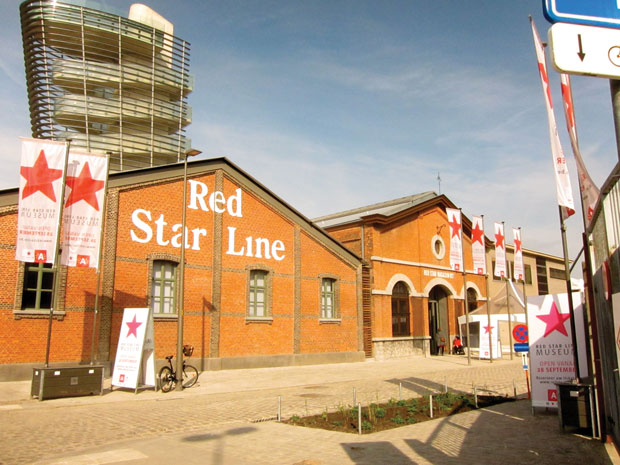New Belgium museum provides a treasure trove to Jewish visitors
Published December 26, 2013
One can’t overestimate the importance of the Red Star Line Museum to Jewish visitors. Although officials call the facility, which opened its doors last September in Antwerp, Belgium, a “European migration museum” it is so much more. This museum is a receptacle of history, a tribute to courage, a genealogical resource center, a library of multi-dimensional stories and the physical jump-off point to not only the shaping of America, but also the modern development of the Jewish people.
The Museum chronicles the history of the Red Star Line, an ocean-crossing passenger line transporting some 2.5 million European migrants, one million of them Jewish, to the United States and Canada between 1873 and 1934.
Through photos, memorabilia, testimonies, maps, art, interactive displays and multi-media installations visitors learn about human migration as well as about the shipping company’s ascendance and decline; the rescue and the restoration of the physical buildings housing the museum; and Antwerp’s history and harbor.
But the essence of the Red Star Line Museum—it’s essential story—is that of the emigrant experience and the grueling journey of the huddled masses yearning to breath free from troubled Europe to the door of America.
Although the museum showcases aspects of first-class travel, it emphasizes steerage, mainly because the museum occupies the shipping company’s original departure warehouses for third-class passengers and the flow of exhibits follow the former footsteps of third-class passengers.
Visitors learn that many of the passengers, seeking relief from poverty, prejudice and persecution, came from Russia, Eastern Europe and the Austro-Hungarian Empire. That they purchased tickets at agencies located in various parts of Europe, buying a “packaged deal,” which included a train trip to Antwerp and a modest hotel. Once at the dock, third-class passengers left all of their belongings to be fumigated and sterilized while they endured a rigorous cleansing program and meticulous medical exams that determined it they were fit for the journey.
Ship models and model cross sections shed light on of life aboard the vessels, which was luxurious for first class, but difficult for steerage, where passengers shared cramped, communal cabins for journeys that that could last 10 or more days.
The Red Star Line Museum actively collects stories and memorabilia from contemporary emigrants, as well as those who traveled on the line, who descended from travelers, and/or who never left Antwerp.
Some personal stories are told at various spots in the museum, among them the stories of Red Star Line travelers Albert Einstein, Irving Berlin and Golda Meir. Sam Fox, a local St. Louis businessman and former ambassador to Belgium, is represented as his mother traveled to America on a Red Star Line ship. And visitors are encouraged to search the museum’s genealogical database to find their own stories.
I found my husband’s grandfather, Aldof Milder, on a passenger list for the S/S Kensington, a Red Star Line ship launched in 1893. The information stated that he traveled alone, at the age of 14, and that his brother-in-law paid for his ticket in steerage, (which is said to have cost the amount a laborer earned working 75 days—or the equivalent of $1,300 in today’s money). I knew Aldof as an elderly man of few words and little action. The museum gave me a background that spoke volumes of his courage and fortitude—to leave all behind and travel with virtually nothing, alone, to the unknown, eventually landing in St. Louis and spreading roots of a family tree that gave our city teachers, doctors, researchers, inventors and artists.
The Jewish stories that come alive at the museum help visitors understand the melting pot of emotions that must have been shared by most emigrants—fear, excitement, despair, hope, sadness, joy and the feelings associated with spirits unshackled and sent soaring.
Irving Berlin’s piano sits in a room at the end of the historic displays symbolizing the success of the emigrants. In terms of popular music, the Red Star Line Museum is the link connecting “Anatevka” (from “Fiddler on the Roof”) and “God Bless America” at the end of the road.
In addition to the main displays, a small café and a retail shop, the museum boasts a dramatic observation tower shaped like the funnel of an ocean steamer that offers views of the city, port and beyond.
For opening hours, entrance fees and other information visit: www.redstarline.be/en .















